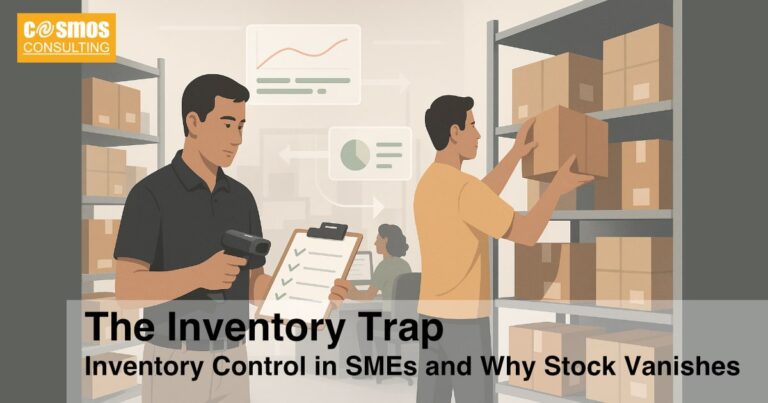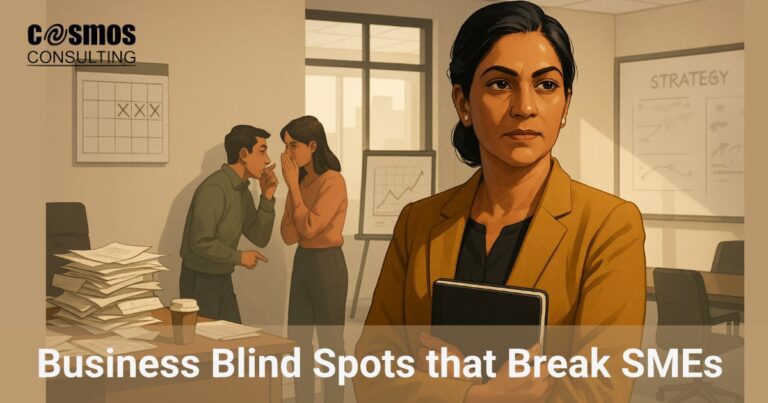🔧 When There is No System, Everything Becomes a Follow-Up
It starts small.
A team member messages you:
“Hey, has the client approved the quote yet?”
You check your inbox. Can’t remember. Forward the email.
Then another message:
“Did finance send the invoice?”
You ping accounts. No response yet.
By mid-morning, you are buried in updates, approvals, and chasing tasks, not because your team is careless, but because there’s no shared system. No place where the status is visible. No rhythm that keeps things moving.
Everyone is waiting on someone.
And that someone is usually you.
SME founders often ask for better systems, but the real need is visibility. The fastest fix? Simple dashboards for SMEs that make progress visible without micromanagement.
🧩 Why Simple Dashboards for SMEs Work Better Than More Tools
In Cosmos Consulting’s COSMOS 4S SME Systems Framework™ , we have already covered the first two essentials:
- Structure: You have mapped roles, clarified responsibilities, and reduced chaos.
- SOPs: You have documented repeatable tasks so your team knows how to execute, not just what to do.
💡 This is the third step of the COSMOS 4S Systems Framework™, a practical approach to systemising your SME without chaos.
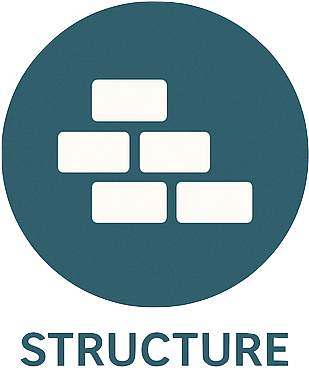
Define roles, workflows, and tools
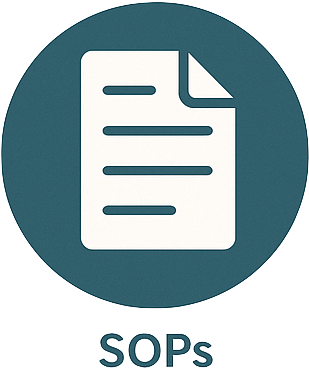
Document how work gets done

Build tech, templates, or automations
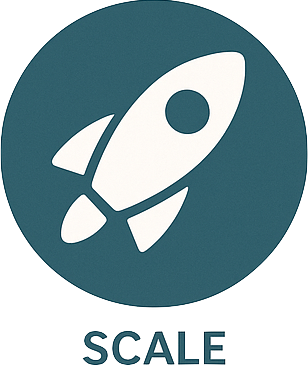
Delegate with clarity and track performance
But even with structure and SOPs in place, many SMEs still feel stuck.
Why?
Because the leader is still the glue — holding updates, chasing progress, and fielding questions.
What is missing is not effort. It is visibility.
What is missing is not talent. It is SYSTEMS.
This third “S” is the turning point.
Not complex software… Not a new hire…..
Just simple, well-designed systems that:
- Show what is happening in real time.
- Help teams track, update, and self-manage.
- Free the leader from being the source of all answers.
🎯 Want a quick way to spot gaps in your operations?
Because true operational clarity is not just knowing what to do.
It is knowing where things stand without asking.
🔄 From Dependency Loops to Self-Managing Rhythms
Most SMEs are stuck in a two-way trap:
- The team depends on the leader for decisions, approvals, next steps.
- The leader depends on the team for updates, status checks, and follow-through.
This creates a constant loop of check-ins, nudges, and repeated conversations:
“Has the invoice been sent?”
“Not sure. I will check with finance.”
“Is the client onboarding done?”
“Waiting for the update from operations.”
No one has full visibility. Everyone is waiting on someone else. And the founder is often the one holding the threads, whether they want to or not.

💡 Real-World Example: Manufacturing Business
Before: The production schedule is in the founder’s head.
Every day, team members ask:
“What is the priority today?”
“Can we start the next batch?”
After: A shared simple dashboard for SMEs tracks what is been produced, what is pending, and what is delayed.
- The team updates it daily.
- The founder checks it weekly.
- No chaos. No guesswork.
💡 Real-World Example: Service Business
Before: Project status is tracked in scattered email threads.
The leader constantly asks:
“Is the proposal sent?”
“Did we follow up with the client?”
After: A shared task board (Trello, ClickUp, etc.) shows task status, deadlines, and owners.
- Team members move cards forward.
- Automated alerts flag delays.
- No one waits for instructions.
- The system keeps the flow moving.
Systems break this loop.
With a few simple dashboards or shared trackers:
- The team can act without waiting.
- The leader doesn’t need to chase.
- Information lives somewhere visible — not inside someone’s head.
That’s the quiet power of smart systems:
➤ They don’t just store data.
➤ They shift ownership.
💻 What We Mean by ‘Systems’ (It is Not What You Think)
When SME founders hear the word “systems,” they often think of two things:
- Complicated software
- Expensive consultants
So they delay. Or avoid it completely.
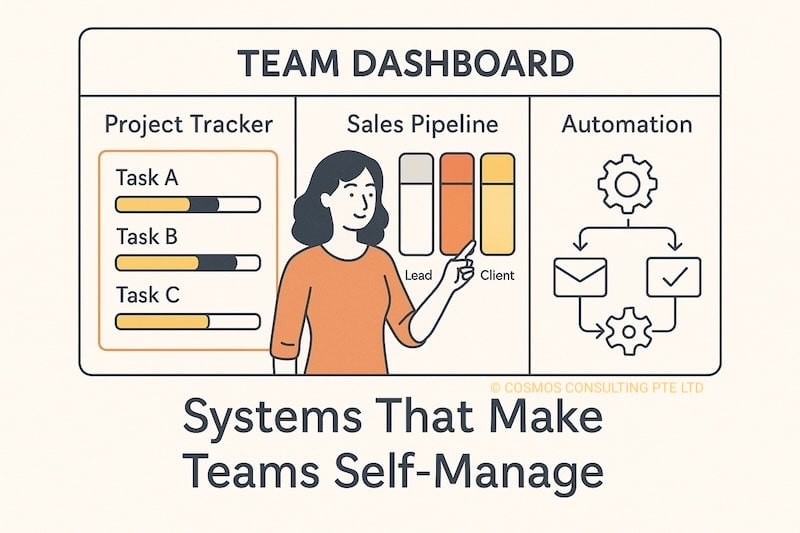
But at Cosmos Consulting, we define systems differently, especially for lean teams.
A system is any tool, routine, or workflow that reduces reliance on memory and makes work visible.
That could be:
- A Google Sheet that tracks pending orders
- A WhatsApp group with daily status updates
- A Trello board showing who is doing what
- A dashboard that shows collections, POs, and deliveries at a glance
These are not big IT projects.
They are lightweight tools that help your team stay in sync, without you being the hub.
SME Systems in Action:
| Need | Simple System | Tool Example |
|---|---|---|
| Track pending payments | Shared tracker | Google Sheets + colour codes |
| Monitor project tasks | Visual task board | Trello, Notion, ClickUp |
| Avoid missed follow-ups | Auto-reminders | WhatsApp Broadcast / Email alerts |
| Weekly team updates | Shared rhythm | Monday huddles + summary tracker |
The best systems don’t require training.
They just fit into your team’s daily rhythm — and make it easier to move without waiting.
🪜 How to Start Small (and Smart)
You don’t need to “implement a system.”
You just need to solve one nagging problem with a tool that sticks.
Start here:
👇 1. Pick a friction point
What do you follow up on every single week?
- Pending collections?
- Missed handovers?
- Delivery delays?
Choose one area that slows you down or keeps falling through the cracks.
🔧 2. Use what you already have
You don’t need new software.
- Google Sheets = Live tracker
- WhatsApp = Daily update rhythm
- Trello = Task flow + ownership
- Notion = Project hub + SOP storage
Even a simple tool like Google Sheets can become a powerful live tracker for tasks, payments, or team updates; no special software required.
Build systems around existing behaviours, not ideal ones.
If your team is already on WhatsApp… use it.
If they prefer spreadsheets… start there.
✅ 3. Keep it visible, simple, and shared
The test of a good system is:
- Does the team actually use it?
- Can you see what’s happening without asking?
- Is ownership clear?
Don’t aim for fancy.
Aim for something that works without you pushing it every time.
✅ What Good Systems Look Like (and How to Know They are Working)
Not all systems work. Some look impressive — but collapse without constant nudging. Others are so overbuilt that no one uses them.
So how do you know when a system is actually working?
Look for these signs:
🔍 1. The team updates the system without reminders
You’re not chasing people to “fill the tracker” or “update the board.”
It becomes part of the rhythm, not an extra chore.
🧭 2. You get answers without asking
Instead of “Where are we with…?” – you already know.
- You glance at the delivery dashboard – 4 out of 5 dispatched.
- You open the collections tracker – RM42K, still pending.
No need to ping three people.
The system answers for them.

🤝 3. Ownership is obvious
There is no confusion about who is doing what.
Tasks don’t fall into a black hole.
A good system shows:
- Status: Is it done or pending?
- Owner: Who is responsible?
- Timeline: When is it due?
🧘♂️ 4. You don’t feel like the bottleneck
… AND this is the real win.
You are no longer the only one holding it all together.
Your team knows where to look, what to do, and when to escalate.
That is not just better operations.
That is operational relief.
🚀 SME Systems Are not Optional – They are the Only Way to Scale
Here’s the hard truth:
Your team would not magically become proactive.
You won’t magically have more time.
If your business still depends on:
- You remembering what is pending
- You chasing people for updates
- You answering the same questions every week…
…it is not a people problem.
It is a systems gap.

Structure gave you clarity.
SOPs gave you repeatability.
But only Systems give you visibility; the kind that lets your team act without waiting on you.
Systems don’t replace people.
They support them, so your business can run, even when you step out.
That is how lean teams scale:
With clarity… With rhythm…
With systems that quietly run in the background.
❓Frequently Asked Questions
📥 Ready to Make the Shift?
If this post hit close to home, you are not alone.
Most growing SMEs hit the same wall:
“I have built a good team, but I still feel stuck in everything.”
With simple dashboards for SMEs, founders stop chasing updates and start seeing progress at a glance. Download our free 4S Checklist to build your own >>
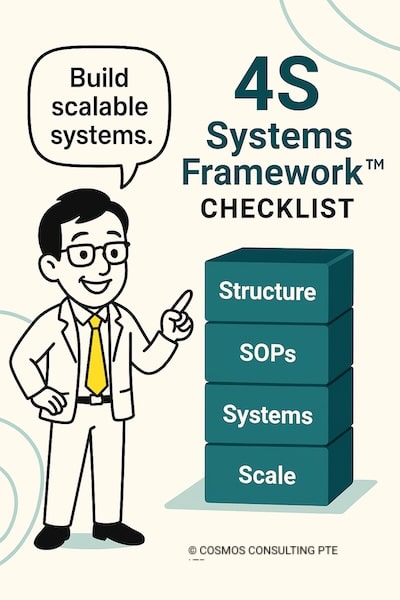
4S Checklist
💬 Got questions or stuck somewhere?
Leave a comment or 📬 Got a question? write to me… I read every email.
Let us build SME SYSTEMS that actually work for your team.
🛡 Trademark Notice
The COSMOS 4S Systems Framework™ and COSMOS 5R Leadership Framework™ are proprietary tools developed by Chhavi Jain, Director, Cosmos Consulting. These frameworks are unregistered trademarks (™) and may not be copied, reproduced, or repurposed without explicit written permission.
© Cosmos Consulting, 2025. All rights reserved.


